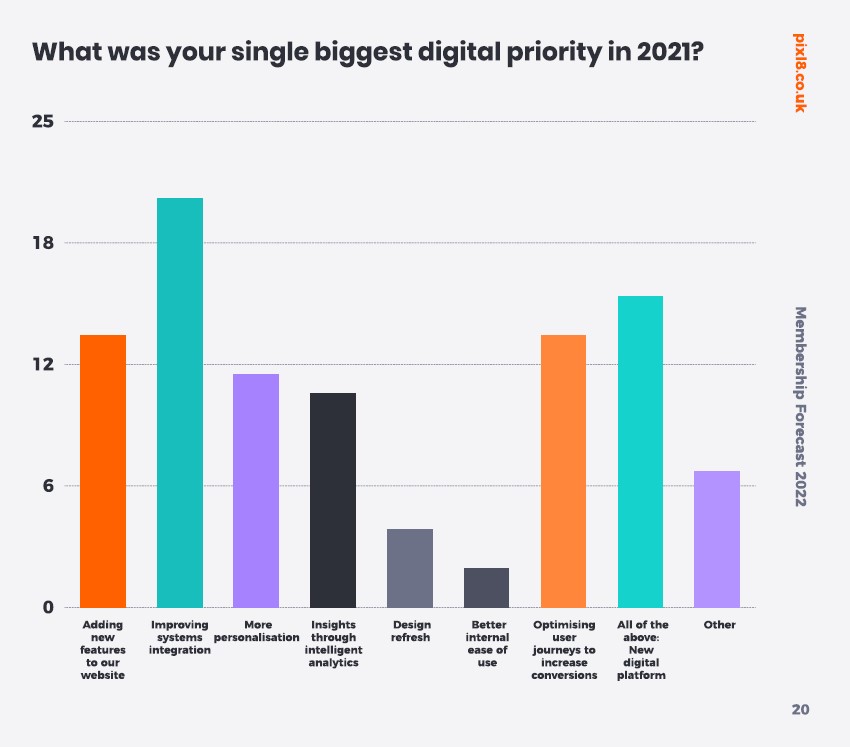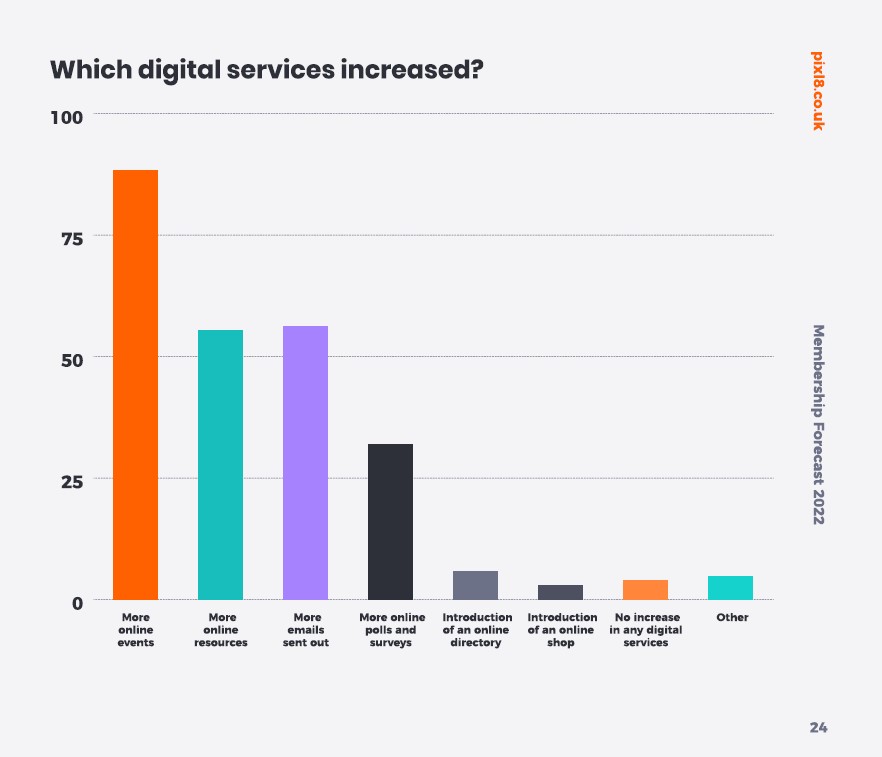
As a specialist in membership organisations and influencing, and founder of Membership World, I’ve naturally been keeping a keen eye on what’s been going on as we emerge from the disruption caused by the Covid-19 pandemic.
What characterises membership organisations?
Membership organisations are designed to meet either a professional, emotional or cultural need. Those that thrive do so because they meet these needs and deliver tangible benefits to their members. People who come together as a result of their membership find that their individual and collective ambitions are supported, and they gain either knowledge, skills, inspiration and connections (or a combination of all those).
In many ways mirroring our general working practices, as a result of the pandemic, membership organisations dealt with a sudden and forced move to online engagement and digital-only membership benefits. This has been followed by a gradual return to in-person events – but in tandem with continued digital activity, creating a hybrid approach. So what’s next?
The 2022 Membership Forecast Report from Pixl8, their third annual analysis, is full of detailed insights into the membership sector. They track how the membership model is evolving, and I’m going to share some of the highlights with you here.
Pixl8 analysed responses from 116 participants from the UK and abroad:
- 43% at management or senior level, 21% Chief Executives and 15% directors
- Nearly 48% of organisations are London-based and over 22% are in the Midlands. 11% are based outside the UK
- 44% of organisations have a turnover under £1M, around 30% £1M-£5M and 20% over £5M
- 58 responders were from membership organisations and 38 were from associations
- Around 66% of the association participants work at professional bodies with the remainder drawn from trade association
- 16% of responding organisations have charitable status
Is there growth in the membership sector?
The membership sector seems reasonably buoyant, with 57% of organisations increasing their membership base in 2021 – up from just 25% in 2022.
Around 20% reported that their numbers remained static, which for some represents a significant achievement in a challenging period.
Around 10% reported that their numbers had shrunk.
As Pixl8’s authors point out, a decline in numbers isn’t the only factor to take into account in a membership organisation.

What are membership organisations’ key strategic priorities?
Unsurprisingly, the two top priorities by far are member acquisition and retention. 45% of responders reported acquisition as their main priority, followed by retention (32%).
Responding to a new category ‘encouraging members to update their profile’, 16% saw this as a top priority. This, perhaps, indicates an understanding that more detailed, accurate and up-to-date information about their members is a key driver in developing more engagement and more personalised experiences.
Developing a more sophisticated digital presence is key to enabling a more personalised membership experience, and the report looks into various aspects of digital priorities.
How much confidence is there in digital investment for membership organisations?
22% of respondents reported that they have strong digital foundations, and plan to invest further. Slightly fewer reported a fully integrated digital strategy with personalised membership experiences.
By far the largest number of respondents stated that they had a strong digital presence but recognised that they needed to develop a more sophisticated approach – though weren’t sure how to approach it.
Small, but significant numbers reported either that they didn’t recognise the importance of digital yet, or that they knew it was important but didn’t know how to move forward with it.
With hybrid membership models apparently here to stay, it’s important for organisations of all sizes to understand their digital potential and develop a clear roadmap.
It’s interesting to note that the numbers reporting having achieved digital sophistication in 2021 (43%) are slightly down from 2022 (43%).
Pixl8 don’t go into why this might be. I wonder whether, as we gradually return to a sort of ‘normal’ some organisations are treating digital transformation as less of a priority, and anticipating a return to models more similar to the pre-Covid world? If this is the case, looking at business in general, I’d find this concerning. Successful businesses across the board are embracing digital transformation. It’s no longer enough for digital to be a bolt-on. Rather, sustainable growth often hinges on having joined up systems at the heart of a business, and consumers have increasingly sophisticated expectations around a truly personalised experience.

What are membership organisations’ key digital priorities?
There’s an interesting spread of priorities here, with systems integration topping the leaderboard. Around 12% selected all the options as priority, perhaps an indication that they recognise the importance of placing digital at the core of the organisation?


Digital services offered by membership organisations in 2021.
Again, it comes as no surprise to see that online events increased in 2021 – with nearly 90% of respondents reporting an upturn. Though many of us have now been enjoying the ability to ‘get out there’ in person once more, we have also recognised the convenience of meeting online – and the potential to expand our network easily and at little direct cost – particularly geographically.
Many membership organisations have, it seems, been embracing the possibilities offered by digital technologies to streamline event management and registration.
Membership organisations have also recognised the need to offer more quality online content. Perhaps a side-effect of that was an upturn in the number of emails being sent out. Is that a positive step, or do we need to consider how this increase is received by our members?
What are the main challenges facing membership organisations?
Whilst there is much to be optimistic about, there are, of course, some significant challenges in these turbulent times. Few of them come as a surprise, in fact, I’d be surprised if these results didn’t closely reflect what we are seeing across most business sectors:
- multiple systems with no or only partial integration
- overstretched team
- insufficient budgets to achieve their aims
- insufficient information about their members
Do these sound familiar? Are you facing other challenges?
As a leading influencer in the membership sector, I offer specialist training and consultancy in strategy and managementorganisations, covering the complete membership lifecycle. I tailor my programme to your specific needs, so if you have a challenge you’d like some help with, get in touch. I’d love to chat about how I can help.
Gordon is an experienced membership professional. He is the founder of Membership World, and has worked with many trade associations and professional bodies.
Gordon Glenister is also the author ofthe book, Influencer Marketing Strategy. Learn:
- how to build an influencer strategy
- what makes a great influencer
- about the rise of Clubhouse and Tik Tok
- about future digital trends for connecting with a digital customer
Find out more and order your copy at: Influencer Marketing Strategy Book By Gordon Glenister – Gordon Glenister

